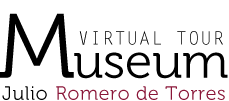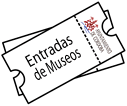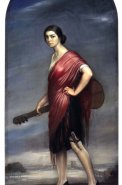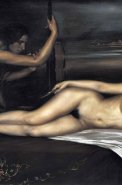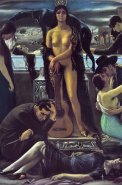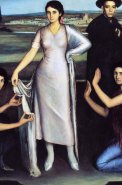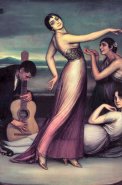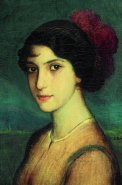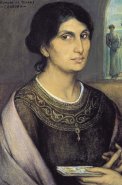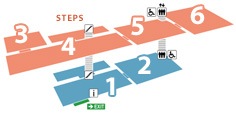
Room 4. The origins of deepness
In this hall great works of Julio Romero de Torres can be appreciated like that of Nuestra Señora de Andalucia or Our Lady of Andalucia, La Nieta de La Trini or The Granddaughter of Trini and Alegria or Happiness. The main theme that is used is flamenco and folk represented with artists of the time and by essential symbols of his Andalusian homeland.
The paintings by Romero de Torres aren’t but motives of the Andalusian folk music “a symbol in each song.”
His admiration for Andalusian folk music and the guitar as well as his flamenco knowledge are what pushed him, at barely twenty years old, to participate in the incipient contest of Cante de Las Minas en la Unión de Murcia in which he sang. The result must not have been very encouraging and Julio Romero de Torres went back to his brushes, without losing his passion for flamenco. It also started an important part of his painting production. In these paintings, “el cante,” or the flamenco song appears as a symbol of Andalusian flamenco.
Julio Romero doesn’t conform to painting the magic spectrum of folk and the beat of flamenco music. However, through his brushes he pays homage to old flamenco singers. He made a portrait of the most important artists of the time, flamenco singers and dancers and in many other portraits he incorporates the guitar as a symbol of his eternal love for flamenco, painting Andalusia, land of nostalgia and happiness. A “deep,” painter like the folk music that he so loved.
Press the Play buttons to access a speech version of the description or the audiodescription for visually impaired.
Click in Audiodescription to access to its text version.
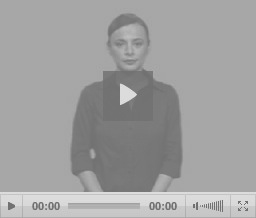
Museum Julio romero de torres. Square Potro 1, 14002 Córdoba
2011 Ayto. de Córdoba. All rights reserved. Legal Advice
